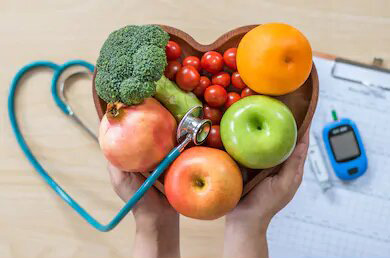Foods to Lower Cholesterol: Cholesterol is a waxy, fat-like
substance that occurs naturally in all parts of the body. Your body requires
small levels of cholesterol to function properly. It is found in the cell
walls and membranes all over the body, including the brain, the nervous system,
muscles, skin, liver, intestines, and heart. Your body uses cholesterol to
produce a variety of hormones, vitamin D, and the bile acids that help to
digest fat.
|
Foods to Lower Cholesterol |
Foods to Lower Cholesterol, you only require a small amount of
blood cholesterol in order to for these requirements to be met. If you have
too much cholesterol in your bloodstream, the excess is deposited in
arteries, including the coronary arteries, where it contributes to the
narrowing and blockages that cause the signs and symptoms of heart disease.
|
Cholesterol is carried through the
bloodstream by proteins that are formed largely in the liver and the
intestine. When bonded with cholesterol, they form four types of
lipoproteins. The two forms that concern us the most here are:
|
High-Density Lipoproteins (HDL):
Associated with cholesterol
generated by the liver. Your body requires this type.
|
Low-Density Lipoproteins (LDL):
Normally formed from digested
saturated fats from food. This is the form of cholesterol that you need to
reduce.
|
FOODS: THE GOOD, THE BAD AND THE DEADLY
|
Foods to Lower Cholesterol, let's start with the pre-conceived
myth that avocados are bad for cholesterol... in fact, monounsaturated fats
can actually help lower blood cholesterol if your meals are low in saturated
fats. Avocados, nuts and seeds, along
with some oils and margarines, contain monounsaturated fats. Like all fats, monounsaturated
should be enjoyed in moderation.
|
Foods to Lower Cholesterol, and yes, dietary cholesterol is
only found in animal foods. If you have high blood cholesterol it's important
to limit foods that are obviously high in cholesterol. These include brains,
liver, kidneys and other offal foods, egg yolk, scampi, calamari/squid and
prawns. Do note that many nutritionists encourage eating shellfish, despite
their high cholesterol levels, as they contain high levels of omega-3 fatty
acids, which can help to reduce blood cholesterol levels. Nonetheless, other
sea foods also contain omega-3, and have much lower saturated fat and
cholesterol levels than shellfish.
|
The following suggestions are
really healthy eating patterns for all Australians and especially if you want
to lower blood cholesterol levels. Choose lean meat and eat fish twice a
week, remove visible fat from meat and skin from chicken (hopefully most of
you already do), cut down on pastries, biscuits and cakes, limit fatty meats
such as salami and deep fried takeaway foods, and ENJOY more fruit, vegetables, bread and
cereal product, nuts and seeds.
|
Conclusion:
|
Nutrition labels on food can help
you when you're looking for the right food, but you need to know what you're
looking for. Many 'low-cholesterol' foods contain high levels of saturated
fat or trans-fatty acids — both of which contribute to high blood cholesterol.
Even foods that claim to be 'low-fat' may have a higher fat content than
expected. Look for the amount of saturated fat, total fat, cholesterol and
total calories in a serving of the product.
Also check how much a serving is.
Often, it’s smaller than you think. The first ingredient listed is the one
used most in the product, so choose products where fats and oils appear later
in the ingredient listing. Currently, trans-fats aren’t required to be
listed, but if the product has hydrogenated oils, it has a high level of
trans-fatty acids, which can raise your cholesterol level.
|
Now let's see your health reach new
heights!
|
Foods to Lower Cholesterol
Cooking recipes, tips and tricks
October 12, 2019
Tags:

Posted by: Cooking recipes, tips and tricks
Food You Love by Samreen in this blog you find the best recipe ideas, videos, healthy eating advice, party ideas, cooking tips, techniques, and tricks from top chefsYou may like these posts
Recent Post
4/recent/post-list
Popular Posts

Hair Loss Remedies
September 28, 2019

Understanding Influenza – Symptoms and causes
November 02, 2019

Age-related macular degeneration
December 10, 2019
Most Recent
3/recent/post-list
Random Posts
3/random/post-list
Most Popular

Hair Loss Remedies
September 28, 2019

Understanding Influenza – Symptoms and causes
November 02, 2019

Age-related macular degeneration
December 10, 2019
Menu Footer Widget
Crafted with by TemplatesYard | Distributed by Gooyaabi Templates


